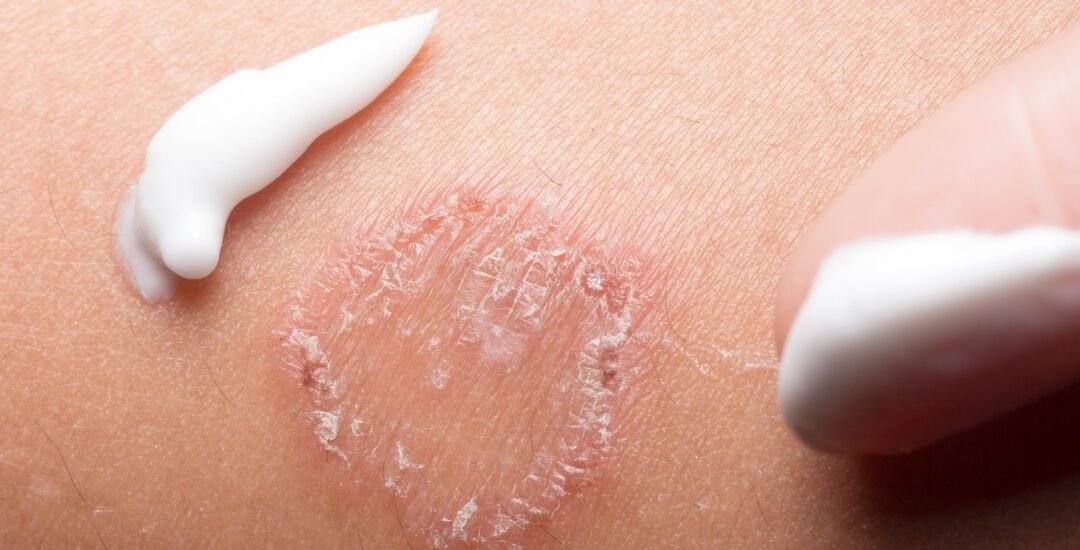Noticed a red, itchy, ring-shaped patch on your skin? You may be dealing with ringworm—a common fungal infection that, despite its name, has nothing to do with actual worms. Ringworm can be uncomfortable and embarrassing, especially when it spreads or becomes inflamed. Luckily, with the right antifungal medicine, treatment is straightforward and usually effective.
This guide will help you understand how antifungal creams, pills, and home care options work to treat ringworm, how to recognize symptoms early, and when it’s time to seek emergency care.
Table of Contents
- What is Ringworm?
- How does Ringworm Spread?
- What does Ringworm Look Like?
- Types of Antifungal Medicine for Ringworm
- How Long does Treatment Take?
- Home Remedies and Over-the-Counter Options
- When to go to the ER for Ringworm
- At-Home Care Tips During Treatment
- Can you Treat Ringworm Without a Prescription?
- Call to Action
- Overview
- Final Thoughts
1. What is Ringworm?
Ringworm is a skin infection caused by a group of fungi known as dermatophytes. It affects the outer layers of skin, hair, or nails and thrives in warm, moist environments. It is medically known as tinea and can appear on different parts of the body, such as the scalp (tinea capitis), feet (tinea pedis or athlete’s foot), and groin (tinea cruris or jock itch).
2. How does Ringworm Spread?
Ringworm is highly contagious. It can spread through direct skin contact with an infected person or animal, or indirectly through contaminated surfaces like towels, clothing, and gym equipment. Sharing personal items or poor hygiene can increase your risk, especially in children and athletes.
3. What does Ringworm Look Like?
The infection often appears as a red, circular rash with raised edges and a clearer center—hence the term “ringworm.” It may be itchy, flaky, or scaly and can grow over time if untreated. On the scalp, ringworm may cause bald patches. On the feet or groin, it may look more like red scaling with cracks or blisters.
4. Types of Antifungal Medicine for Ringworm
- Topical antifungal creams are the first-line treatment for mild to moderate cases
- Common options include clotrimazole, miconazole, terbinafine, and ketoconazole
- For more severe infections, such as on the scalp or nails, oral antifungals may be prescribed
- Oral options include griseofulvin and fluconazole
- Your healthcare provider will recommend the best treatment based on severity and location
5. How Long does Treatment Take?
Most cases of ringworm begin to improve within a few days of starting treatment, but full healing may take two to four weeks. Scalp or nail infections may require longer courses—sometimes several months—of oral antifungal medicine. It’s important to complete the full course, even if symptoms seem to disappear early.
6. Home Remedies and Over-the-Counter Options
- OTC antifungal creams are widely available for skin-based ringworm
- Tea tree oil and apple cider vinegar may help but should not replace medical treatment
- Maintain proper hygiene and avoid scratching to prevent spreading
- Always consult a doctor before trying home remedies, especially for children
- Home remedies should support—not replace—prescribed medications
7. When to go to the ER for Ringworm
Most cases of ringworm can be treated at home or by your primary care provider. However, if you develop signs of a secondary infection—like pus, pain, fever, or swelling—visit an emergency room. Severe scalp infections with large patches of hair loss or ringworm that covers large body areas should also be assessed immediately. If over-the-counter antifungal medicine isn’t working and symptoms worsen, it’s time to seek medical help.
8. At-Home Care Tips During Treatment
- Keep the affected area clean and dry at all times
- Wash hands thoroughly after touching the infected skin
- Avoid scratching to prevent further irritation or infection
- Change clothes, towels, and bed linens daily
- Continue using antifungal cream exactly as prescribed, even after symptoms improve
9. Can you Treat Ringworm Without a Prescription?
Yes, many cases of ringworm can be treated with over-the-counter antifungal creams available at pharmacies. These include clotrimazole and terbinafine, which are effective against mild to moderate infections. However, if the infection persists, spreads, or recurs frequently, consult a healthcare provider for stronger medication or a more thorough diagnosis.
10. Call to Action
Don’t ignore a rash that’s red, itchy, or growing. If your ringworm isn’t improving with home care or OTC antifungal medicine, visit our 24/7 emergency room. We offer fast, effective treatment for skin infections, secondary complications, and more—no appointment needed.
11. Overview
Ringworm is a common and treatable fungal infection. With early detection and consistent use of antifungal medicine, most cases clear up quickly. Severe or spreading infections may need stronger prescription treatments. Always follow through with treatment and maintain good hygiene to avoid recurrence.
12. Final Thoughts
While ringworm might sound intimidating, it’s a manageable condition when caught early and treated properly. If you’re unsure whether your rash is ringworm—or it’s not getting better—don’t wait. Getting medical care promptly can help stop the spread and keep you comfortable during recovery.
Disclaimer
This content is for informational purposes only and is not a substitute for professional medical advice, diagnosis, or treatment. Always seek guidance from a licensed healthcare provider regarding any medical concerns or treatment decisions.

